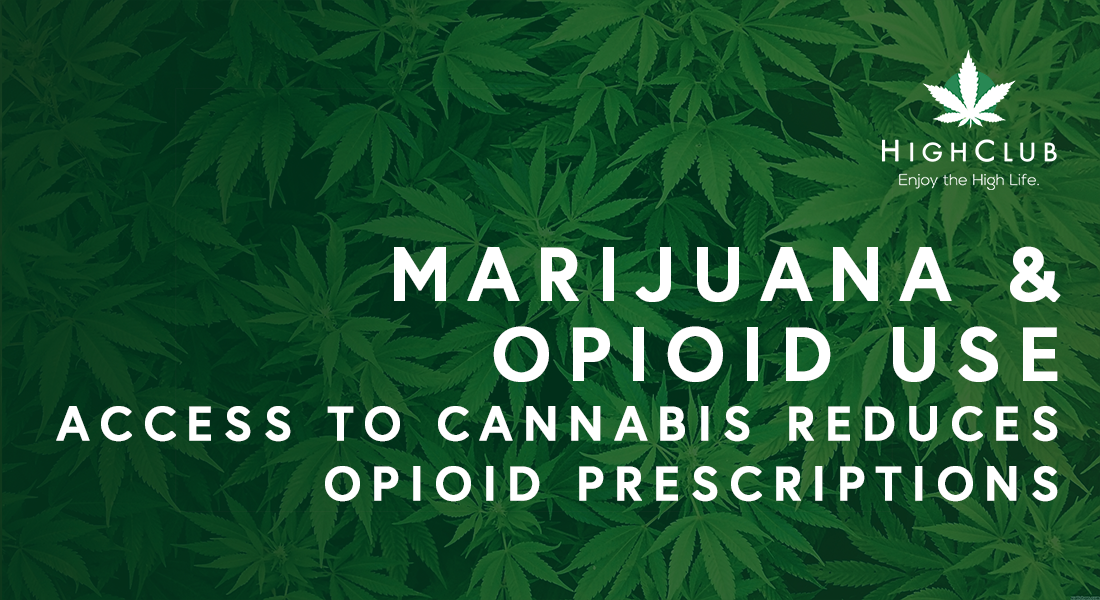Marijuana to mitigate opioid misuse
Marijuana could be a formidable solution to the opiate crisis sweeping across the US and Canada, but its use, according to medical experts, could be counterintuitive. Most wonder why a drug should replace another drug, while others are quick to point out the dangers and side effects of marijuana, including dependency and addiction. As such, any talk of marijuana replacing opioids is seen as divisive.
At the same time, some people are excited by the new possibilities that marijuana brings to the tabled. This is the group that awaits marijuana research with bated breath. They advocate for the use of marijuana to treat chronic pain.
There is some common ground
As much as the use of medical marijuana to manage pain is divisive, opponents and proponents of the drug all agree that there’s a need for more research into the benefits, dosing and safety of marijuana use before its formulated into a drug that manages opiate addiction, hard to manage diseases, and chronic pain. In the meantime, recent studies show that access to marijuana affects opiate use, and this is a positive sign in the race to cut opiate use. JAMA Internal Medicine journal recently published two studies that clearly show that opiate use is low in states that have legalized marijuana use.
Let’s look more at research
According to one of the studies, opioid prescriptions fell sharply when a state in the US legalized marijuana. It shows that the opioid prescriptions that were filled in the Medicare Part D declined by 2.21 million doses per year in states which passed marijuana laws. When medical marijuana dispensaries were opened, opiate prescriptions fell sharply by 3.74 million doses in a year. Prescriptions for morphine and hydrocodone, commonly known as Vicodin, were the most affected.
Another study that collated Medicaid prescription data starting from 2011 to 2016 found that states that legalized medical marijuana use saw a 5.88% reduction of opioid prescriptions. The same states recorded a 6.38% decline in opiate prescriptions when they allowed recreational marijuana.
The authors of these reports said they couldn’t tell whether the introduction of legal marijuana led patients to avoid or cut their opioid use.
They noted that millions of opiate prescriptions were not written, leading to fewer bottles of opioids being consumed, sold, abused or diverted. This, according to the authors of the reports, doesn’t expressly infer that opiate use was reduced or avoided.
Authors also made two important observations. The first report insinuated that factors such as drug tolerance, dependence or pain were responsible for cannabinoids and opioids tendency to overlap signalling systems.
This could explain why most patients who start using marijuana to treat chronic pain report a decreased need for opioids.
They also noted that states that legalized marijuana registered a 24.8% decrease in opioid mortality rates, compared to states that banned the drug. This finding was recorded in a 2014 study that was published in the JAMA. This finding complements the report that point to fewer opiate prescriptions in states that have legalized cannabis.
Doctors and their patients can discuss medical marijuana
Just like there is a sharp division on the fundamental benefits and side effects of marijuana, there’s also a disconnect between physicians and their patients when it comes to the approval ratings of weed, As such, patients are demanding for more information on marijuana, from their doctors. This was corroborated by an April 2017 poll that was conducted by the Quinnipiac University that showed that 94% of Americans say that adults with a doctor’s prescription should be allowed to legally use marijuana for various medical purposes.
In the same nerve, healthcare providers should not be prejudiced when it comes to marijuana prescription and use, regardless of whether they support or oppose medical marijuana or are pro-neutral.
As for physicians, they need to create a conducive environment where patients are free to discuss marijuana with them. They can also advise their patients about the benefits and risks of marijuana use.
Once patients have gathered enough information about marijuana consumption, physicians can then help them reduce opiate use and instead consume marijuana to manage chronic pain.

